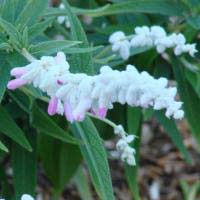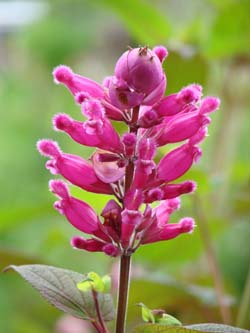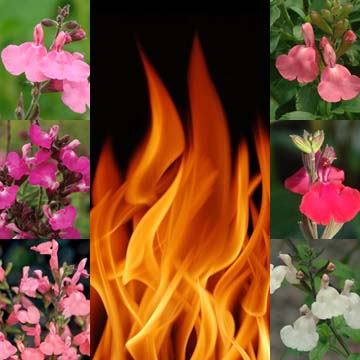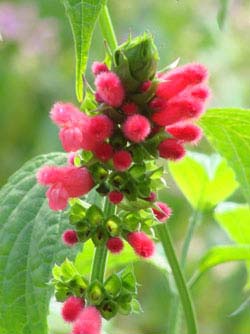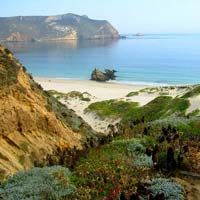
Salvia superstars -- that's what they are. At Flowers by the Sea, we love all our sages (Salvia spp.), but some of them would walk down the red carpet if they had feet instead of roots. Large or small and whatever their bloom time, these are plants that continually amaze us with their adaptability, beauty, ease of growth, endurance and graceful form. They are our Celebrity Salvias. If you want to suggest a favorite that we should light up in the marquee of our Everything Salvias blog, please call or send us a message. We'll consider turning on the Klieg lights and rolling out the carpet.
Posted: Sunday, March 18, 2018
Synopsis:
Mexican Bush Sage (Salvia leucantha) is a garden star, but not a demanding diva. That is why Texas A&M University selected Mexican Bush Sage (Salvia leucantha) as one of its 50 “Texas Superstar” plants, all of which are highly recommended for flourishing in unpredictable weather and drought. The many varieties of Mexican Bush Sage are garden beauties that need little pampering. Native to hot, dry areas of Mexico and Central America, they are accustomed to tough conditions. Flowers by the Sea carries a number of striking varieties.
Read the Article
Posted: Sunday, June 28, 2015
Synopsis:
Differentiating between the plants in a closely related group can feel similar to being an outsider attending a large family reunion. Identifying who's who and how they are connected is a challenge. That's the way it is with Mexico's Roseleaf Sage (Salvia involucrata) Group, which is well loved by hummingbirds. FBTS Online Plant Nursery grows a number of species from this winter-blooming group.
Read the Article
Posted: Friday, February 13, 2015
Synopsis:
Waterwise landscapes don't have to be cactus gardens if you grow leafy, colorful drought-resistant Salvias, such as Australian Heatwave™ Mountain Sages, which are crosses of Salvia microphylla and S. greggii. Hybridizers Howard Bentley and Steve Eggleton of Plant Growers Australia used these tough American and Mexican native plants to create their series. One goal was to aid water conservation during their nation's hot, dry summers.
Read the Article
Posted: Wednesday, May 15, 2013
Synopsis:
A bright, cherry-licorice red, the large, fuzzy blossoms of Salvia oxyphora would make anyone stop and pay attention. Commonly known as Fuzzy Bolivian Sage or Bolivian Spearhead Sage, S. oxyphora has equally unusual foliage that fools the eye. At a distance, the plant’s lance-shaped leaves appear to be a smooth, glassy green. However, they are covered with tiny clear-to-white hairs. They’re also large -- growing up to 5 inches long and 2 inches wide at maturity -- and taper to long, sharp points. It was first collected near Cochabamba, Bolivia, by German botanist Otto Kunst in 1892
Read the Article
Posted: Thursday, November 22, 2012
Synopsis:
Flowers by the Sea grows a number of native California sages, including threatened species such as the woody perennial shrubs Santa Rosa Island Sage (Salvia brandegeei) and Island Pitcher Sage (Lepechinia fragrans). Elusive is one adjective to attach to both plants, because they are rare in their native Channel Islands homelands off the coast of Southern California where they are endangered.
Read the Article

